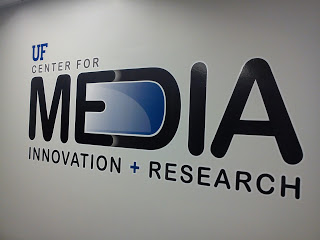“Don’t make me think” reinforces the point that when web
site makes you stop and think about what you’re doing, it is making your life
more complicated, and chances are isn’t designed to get the most out of it.
Generally speaking, no one usually wants to carry a heavier
load than is necessary. That could mean overloading your cart at a supermarket
or trying to download too many files at once from your computer. So why should
we do this to our brain? Things that stop and make you think add to your
brain’s workload, which really drives the point home that being clear in what
we want to articulate. A clearer message prevents people from getting lost and
feeling unsure on how to react.
I have really found this to be true in my own experience. I regularly look up sites related to sports and news. I have a game plan on what I want to find and sort of have a list of sites that I routinely go to
ESPN in order to get up to date on the latest breaking news.
Steve Krug offers some food for thought on how people use
the web. Krug points out most people don’t read a web page in it’s entirety,
but skim it for the first thing that looks appealing, and then follow the link
they were attracted to. He adds people really don’t mess around trying to get
an in-depth feel of a web site. I will again use my example of
ESPN. Usually ESPN has a featured story that they have a video to, I'll usually play the video and follow the various links they send me to.
Krug really tried to emphasize the importance of designing
your website for scanning, not reading. He gave tips on how to make your site
friendlier to the eye like clearly defining portions of a page and what is
clickable and not "clickable." I really think ESPN does a good job of this. They list the stories they have in short headlines that give you the story and the option of pointing and clicking to get more detail about stories that interest you.
He also urged to keep writing for the web brief and make the
page easy to navigate. Page names are
important and should match what you click to get there. Tabs should be your
best friends of navigating because they are hard to miss and well, make the
site look more legit.
Krug spoke about a method he liked to use called the “trunk
test.” He explained as if you’ve been blindfolded and locked in a car truck,
you should still be able to answer certain questions about a site immediately
once your blindfold is taken off. These questions include: What site is it?
What page am I on? What major sections does this site have? Where can I go from
here? Where am I in relation to the rest of the site? Where can I go to search?
I can answer all of the "trunk test" questions. The site is ESPN. I'm on the home page. The site is divided by all of the sports stories of the day or by each individual sport. You can find headlines of stories that grab your attention and follow them to other mediums. The search bar is located in the top right hand corner of the page.
You can’t navigate with an effective home page. They should
allow you how to get what you want from the site and to sort of push you to
things that you really didn’t intend to find once you found the site. Home
pages should include taglines and welcome blurbs in order to get the person to
avoid going back to their search engine.
Krug was also devoted to get his message a cross with a list
of “Do’s” and “Don’ts.” Like telling people what they want to do and making the
site as user friendly. Some of the don’ts where to not hiding information
potential users wanted to find and don’t get too bent out of shape with fancy
features, which serve mainly as distracters.
I found the book to be very helpful and guide I intend to
use and share with some of my friends. Its to the point, filled with useful
info, and pictures which add to Krug’s delivery.









.JPG)


